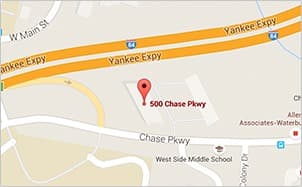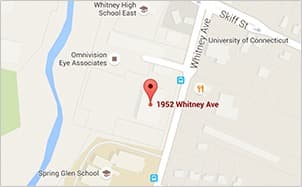What is Blood Pressure?
To understand some causes of high blood pressure, it is important to understand what blood pressure is. Blood pressure (BP) is the measurement of the amount force it takes to pump blood through your body, more specifically the blood force against your arteries. It is made up of two numbers: the top number, Systolic Blood Pressure (SBP), and the bottom number, Diastolic Blood Pressure (DBP). Systolic blood pressure is the force of blood against your arteries when the heart is contracted, while the diastolic blood pressure is the force of blood against your arteries when the heart is relaxed.
What is High Blood Pressure?
Now that you understand the basics behind the numbers, what does it mean when your doctor tells you, “Your blood pressure is 138/96, that is high”. Elevations in blood pressure, or hypertension, increase your risk of developing multiple chronic health problems. Some complications of hypertension include heart attacks, and strokes. Often, people with elevated blood pressure do not have any symptoms, which is why it is so important to monitor your blood pressure, either at home, or routinely at your doctor’s office.
It is important to note that blood pressure can also be “too low,” also called hypotension. Hypotension, when severe, can be life-threatening. Causes of low blood pressure are associated with severe dehydration, infections, and/or acute blood loss. People with blood pressure that is too low often experience symptoms, including but not limited to: dizziness, lightheadedness, and syncope (passing out).
What is Normal Blood Pressure?
What is normal blood pressure? According to the American Heart Association (AHA), normal blood pressure is less than 120/80. Elevated blood pressure begins when the reading is greater than 120/80. See the chart from the AHA website below for the gradient of blood pressure classifications:

How Can I Monitor My Blood Pressure?
Important tips for checking blood pressure at home:
 Ensure you have the appropriately sized blood pressure cuff. Check the insert that your BP cuff came with for measurements. It should list a range of arm circumferences for which it is suitable.
Ensure you have the appropriately sized blood pressure cuff. Check the insert that your BP cuff came with for measurements. It should list a range of arm circumferences for which it is suitable.
Pro-tip: Using a BP cuff that is too small for your arm could cause falsely elevated readings. Oppositely, using a cuff that is too large for your arm could cause falsely lower readings.
- Avoid checking your blood pressure too close to physical activity. You should be seated in an armchair with good support and your feet planted on the ground for approximately 5 minutes before checking blood pressure.
Pro-tip: If your doctor checks your BP right upon sitting in the exam room, please ask them to repeat the reading after you have been seated for about 5 minutes to improve accuracy.
- Place the blood pressure cuff directly on your skin, not over a shirt or sweater, to improve accuracy.
Clinical Trials
It is essential to discuss your home blood pressure readings with your provider if you are concerned that they are abnormal. At Chase Medical Research, we have trained health care professionals, including nurses and doctors, who can support your healthcare journey and provide education about proper blood pressure monitoring techniques. We also have active clinical trials for both resistant and chronic hypertension. These clinical trials are investigating blood pressure management medications, in some cases with different modes of action than drugs currently in use. These newer medications may be more effective for you than what you are currently taking. If you are interested in learning more about these trials, please contact us at (203) 419-4404.
References
- American Heart Association. Understanding blood pressure readings. May 17, 2024 https://www.heart.org/en/health-topics/high-blood-pressure/understanding-blood-pressure-readings#:~:text=If%20your%20readings%20are%20still,your%20health%20care%20professional%20immediately.
Share This Post
Recent Posts
- Cardiovascular Outcome Clinical Trials April 30 2025
- Diabetic Peripheral Neuropathic Pain April 30 2025
- Are All Types of Cholesterol Bad? April 30 2025
- Obesity and Cardiovascular Disease: Is There a Link? April 30 2025
Categories
- Clinical Trials
- Cardiovascular Disease
- Diabetes
- Obesity
- Kidney Disease
- Hypertension
- Pain Management
- Vaccine
- Cholesterol
- Chronic Obstructive Pulmonary Disease
- Diabetic Peripheral Neuropathy
- Migraine
- Osteoarthritis
- Biologics
- COVID-19
- Gastroesophageal Reflux Disease
- Irritable Bowel Syndrome with Constipation
- Lyme Disease
- Nonalcoholic Steatohepatitis
- Respiratory Syncytial Virus


